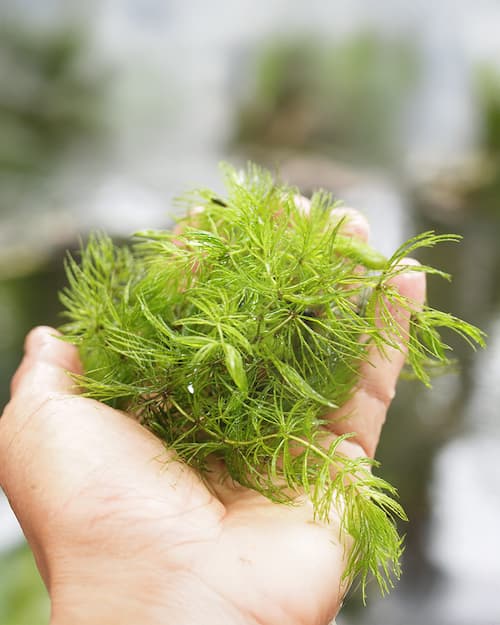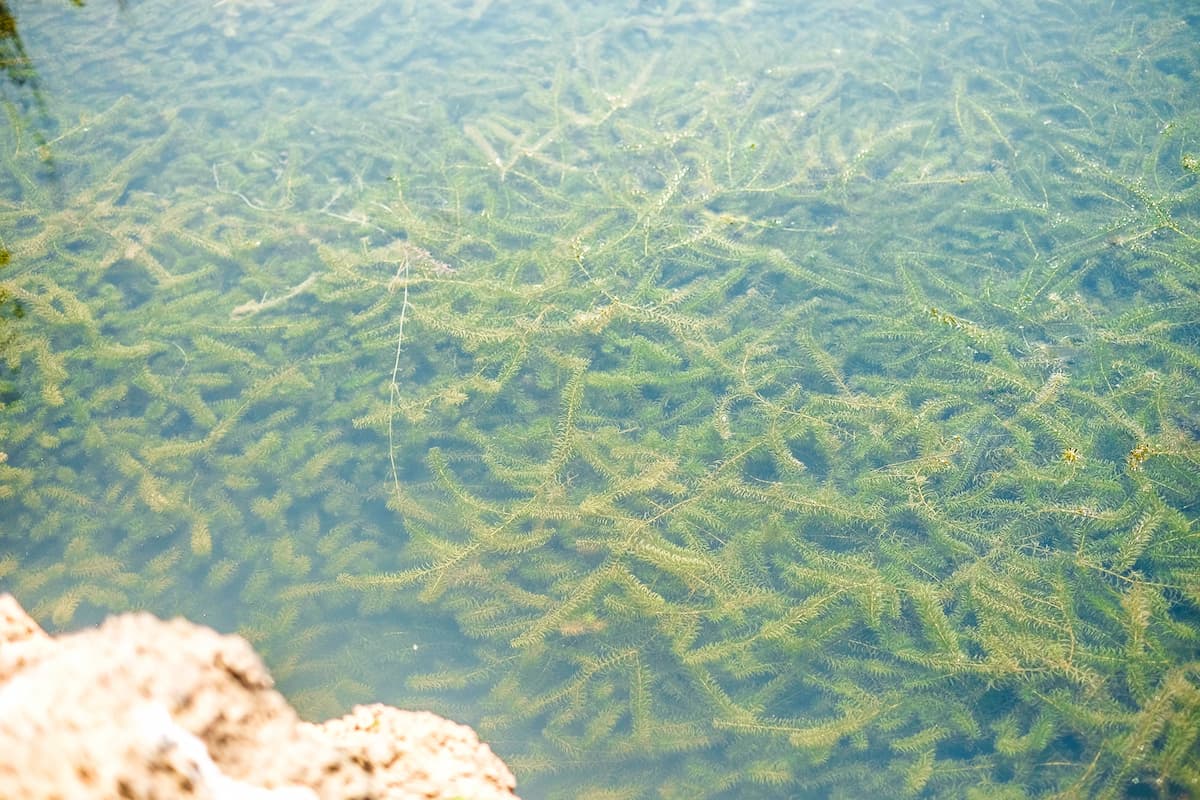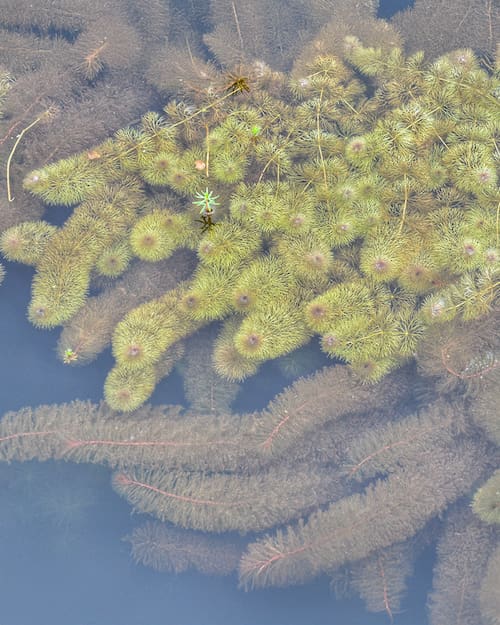Hydrillais one of the most aggressive and invasive aquatic weeds found in Florida and throughout much of the southeastern United States. What may begin as a few strands of green can quickly turn into dense mats that choke out native plants, clog waterways, and degrade water quality. If you manage a pond or lake and notice rapid underwater plant growth, there’s a good chance you’re dealing with hydrilla.

In this guide, we’ll explain what hydrilla is, how it spreads, why it’s so hard to control, and what Pond Gurucan do to help. Whether you’re a homeowner, HOA board member, or golf course superintendent, understanding how to identify and remove hydrilla verticillatais the first step toward regaining control of your waterbody.
Hydrilla, also known as hydrilla verticillata, is a submerged aquatic plant native to Asia. It was first introduced to the United States through the aquarium trade and has since spread aggressively across many freshwater ecosystems.
Its common nickname, water thyme, comes from its physical resemblance to the terrestrial herb. But make no mistake — this is no garden variety plant. Hydrilla grows quickly, forms dense underwater colonies, and crowds out beneficial native vegetation.
This classification is important for identifying the plant correctly during inspections or aquatic weed surveys. At Pond Guru, we use this taxonomic detail to distinguish hydrilla from other submerged weeds like coontail or elodea.

So, where did hydrilla come fromand how did it end up clogging ponds in Florida and beyond?
Hydrilla is native to Asia, Africa, and parts of Australia. It was first introduced to the United States in the 1950s through the aquarium trade. Discarded aquarium plants found their way into Florida waterways and quickly took root. Since then, the plant has spread through:
Hydrilla in Floridais now considered a Class I invasive species — the highest category — meaning it has severe ecological and economic impacts.
Underwater hydrillais a master of survival and rapid reproduction. It grows from fragments, tubers, and turions (specialized buds), which means even a small piece of the plant can restart an entire colony.
Hydrilla can grow as much as 1 inch per day, reaching the water’s surface and forming thick mats that block sunlight and lower oxygen levels.
Key traits of hydrilla growth:
If left untreated, hydrilla can dominate a pond within a single season, making early identification and treatmentcritical.

A natural question many pond owners ask is: what eats hydrilla?
There are a few biological controls that feed on hydrilla, including:
However, biological methods alone are rarely enough to fully remove hydrilla once it has spread. Pond Guru often incorporates grass carp into an integrated plan, but we always start with proper identification and targeted removal strategies.
Controlling hydrilla takes more than a rake or a few manual trimmings. Here’s how to remove hydrilla from lakesystems or private ponds using professional strategies:
Skimming or cutting hydrillamanually is possible for small patches but can actually make the problem worse if fragments are left behind. For large infestations, Pond Guru uses specialized harvesters or Truxor aquatic machinesto remove vegetation safely and thoroughly.
EPA-approved aquatic herbicides can target hydrilla effectively when used responsibly. Timing, dosage, and water movement must all be considered to minimize damage to fish and other plants.
In some cases, triploid grass carpare introduced to gradually reduce hydrilla biomass. These fish are sterile and regulated in many states, including Florida.
One-time treatment isn’t enough. Pond Guru provides follow-up monitoring, water quality analysis, and seasonal maintenance to ensure hydrilla doesn’t return.
If you’re dealing with hydrilla Floridainfestations or suspect submerged weeds are taking over your pond, Pond Guruis your go-to solution. Our team specializes in identifying aquatic weeds, recommending the best control method, and maintaining long-term pond health.
We offer:

Hydrillais one of the most invasive aquatic weeds in the U.S., especially in warm climates like Florida. Its rapid growth, resilience, and ability to reproduce from fragments make it a challenging opponent — but not an unbeatable one.
With professional support from Pond Guru, you can reclaim your pond or lake from hydrilla, restore balance to your aquatic ecosystem, and prevent future outbreaks.
Hydrilla is an invasive aquatic plant that grows rapidly and chokes out native vegetation. It creates dense mats that lower oxygen and disrupt pond ecosystems.
It spreads through fragments, tubers, and turions. Even a small piece can regrow into a full colony.
Triploid grass carp are commonly used for biological control, along with some insects, but these are typically supplemental strategies.
Effective removal involves mechanical harvesting, herbicide application, and long-term maintenance — all of which Pond Guru can provide.
Yes. Florida is one of the most heavily affected states, and hydrilla is considered a top-tier invasive species in the region.
how to get rid of hydrilla, how to kill hydrilla, hydrilla killer, pond water clarity solutions, how to clear murky pond water
fish, water, pond, pump, koi pond, plant, algae, water garden, waterfall, aquatic plant, drainage, debris, flood, garden, bacteria, filtration, koi, ecosystem, soil, lake, landscape, water quality, maintenance, fountain, inspection, construction, nutrient, beauty, oxygen, ph, lighting, garden pond, stormwater, stream, plumbing, gravel, aquascaping, aquatic ecosystem, maintenance services, renovation, water treatment, fish pond, sludge, nitrate, fish kill, aesthetics, hardscape, pond cleaning service near me, pond cleaners near me, koi pond cleaning near me, fish pond cleaning service, pond cleaning company, small pond cleaning service, fish pond cleaning, pond servicing, cleaning pond algae, clean up a pond, pond cleaning service, pond cleaning, koi pond cleaning, koi pond cleaning service, pond clean out, ice, leaf, matter, wetland, organic matter, tank, decomposition, chlorine, pressure, fresh water, ammonia, request, water maintenance, water filter, water clarity, tap water, animal, garden hose, aeration, wildlife, swimming pool, rain garden, cleaner, waste, clay, barley, garden design, hose, green